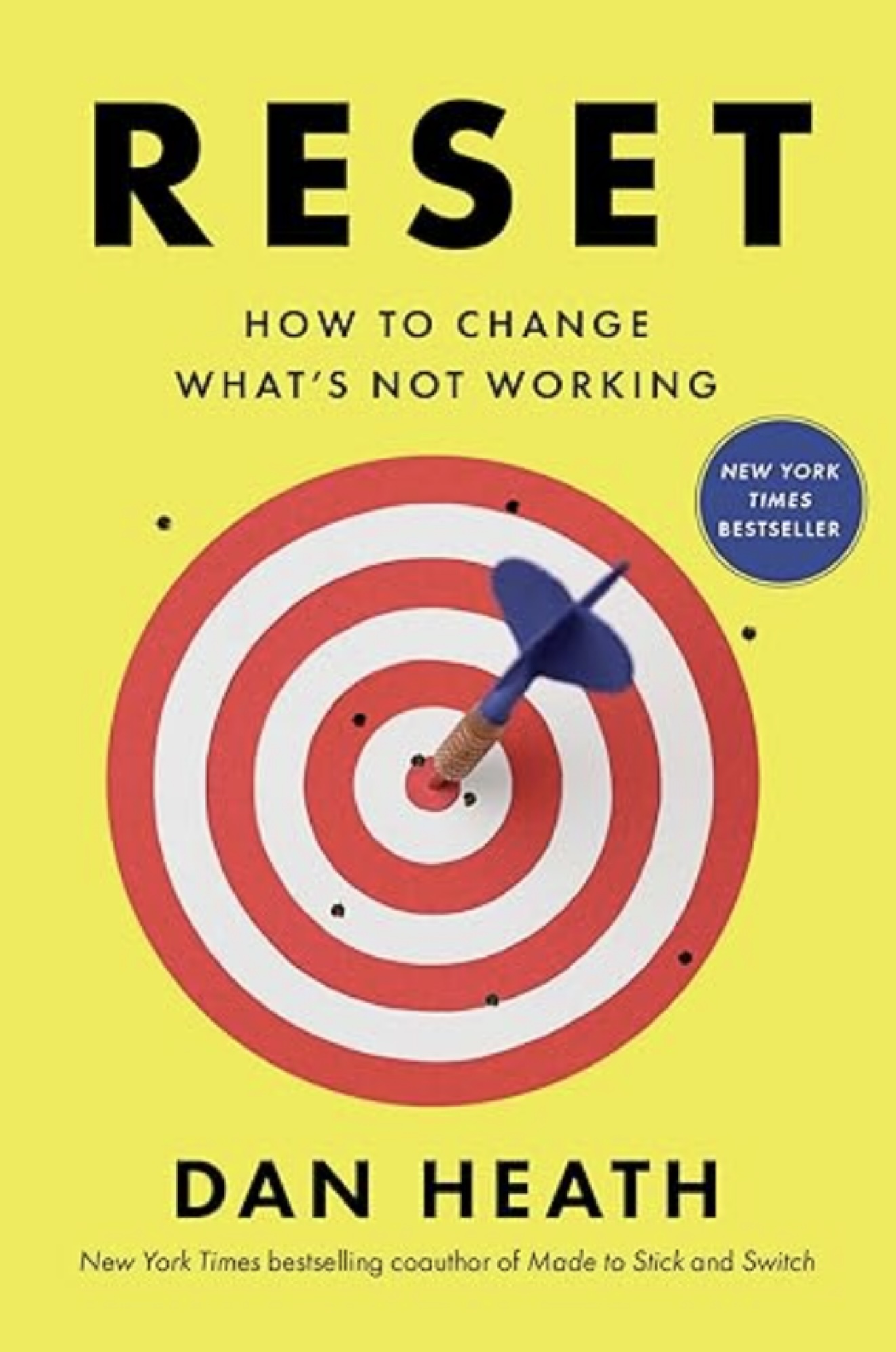
Reset: How to Change What’s Not Working by Dan Heath shows how you identify leverage points that can improve any organization. He encourages you to look for bright spots, reallocate your resources, start with a burst, recycle waste, tap motivation, and let people be more autonomous. These principles apply to any organization so school leaders should take note and get a copy.
Introduction
- Dan starts with a story about a hospital mail room that went from taking three days to deliver packages to delivering all packages the day they arrived. They went from dysfunction as the natural state of affairs to resetting and getting unstuck. Sometimes it takes more resources to sustain a bad system. The key thing is to look for and find a leverage point to transform the way you work. Part one will help with this. Learn how to shake off bad habits so you can go from spinning your wheels to rolling forward.
Section I – Find Leverage Points: 1. Go and See the Work.
- If you are a manager of others, or a school administrator, you need to go see what people and students are doing in person. Sitting around a table and talking about something is not the same as seeing it up close. (Doug: As a principal, I prided myself on managing by walking around, which allowed me to see what students and teachers were doing.
- In some cases, the work people are doing may not be visible. This is when you have to get creative and make it visible. Be sure to check out the links in this book at Reset-Links.
2. Consider the Goal of the Goal
- Before you sink effort into a difficult task, make sure it’s the right task. If you lock into a goal too quickly, you may be blind to the bigger picture and alternate routes. Dan introduces the concept of the miracle question, which helps you identify the first productive steps to take. Be skeptical about the goals you select. Asking what’s the goal of the goal helps identify your destination and why it is important.
3. Study the Bright Spots
- Bright spots are your most engaged employees. You need to analyze them and do what you can to replicate them.
4. Target the Constraint
- Constraints are limiting factors or bottlenecks. They are standing in the way of greater success. As you deal with one constraint, the constraint will shift to somewhere else. Dan tells the story of Chick-fil-A and how their constraint shifted from ordering to food prep as they worked to maximize their drive through business. If you don’t direct investments at your constraint, they may be wasted. If you change your goal, your constraint may also change.
5. Map the System
- Sometimes you have to take a big picture view of a situation to improve things. One approach is to look at multiple silos at the same time to see if a change in one can help the other. There is a story here that shows how this can work. There is another story about how a methane monitoring satellite launched in 2024 is helping the industry find and plug leaks of this greenhouse gas. Be sure to ask questions like why do we do that and can we do it better?
DrDougGreen.com If you like the summary, buy the book





